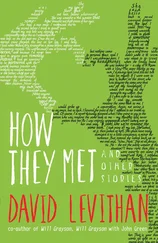We’ve now sort of bled into a more serious rejoinder to Philosophical Descriptivism: from the fact that linguistic communication is not strictly dependent on usage and grammar it does not necessarily follow that the traditional rules of usage and grammar are nothing but “inconsequential decorations.” Another way to state this objection is that something’s being “decorative” does not necessarily make it “inconsequential.” Rhetoric-wise, Pinker’s flip dismissal is very bad tactics, for it invites precisely the question it’s begging: inconsequential to whom?
A key point here is that the resemblance between usage rules and certain conventions of etiquette or fashion is closer than the Philosophical Descriptivists know and far more important than they understand. Take, for example, the Descriptivist claim that so-called correct English usages like brought rather than brung and felt rather than feeled are arbitrary and restrictive and unfair and are supported only by custom and are (like irregular verbs in general) archaic and incommodious and an all-around pain in the ass. Let us concede for the moment that these claims are 100 percent reasonable. Then let’s talk about pants. Trousers, slacks. I suggest to you that having the so-called correct subthoracic clothing for US males be pants instead of skirts is arbitrary (lots of other cultures let men wear skirts), restrictive and unfair (US females get to wear either skirts or pants), based solely on archaic custom (I think it’s got to do with certain traditions about gender and leg-position, the same reasons women were supposed to ride sidesaddle and girls’ bikes don’t have a crossbar), and in certain ways not only incommodious but illogical (skirts are more comfortable than pants; 38 pants ride up; pants are hot; pants can squish the ’nads and reduce fertility; over time pants chafe and erode irregular sections of men’s leg-hair and give older men hideous half-denuded legs; etc. etc.). Let us grant — as a thought experiment if nothing else — that these are all sensible and compelling objections to pants as an androsartorial norm. Let us, in fact, in our minds and hearts say yes— shout yes — to the skirt, the kilt, the toga, the sarong, the jupe. Let us dream of or even in our spare time work toward an America where nobody lays any arbitrary sumptuary prescriptions on anyone else and we can all go around as comfortable and aerated and unchafed and motile as we want.
And yet the fact remains that in the broad cultural mainstream of millennial America, men do not wear skirts. If you, the reader, are a US male, and even if you share my personal objections to pants and dream as I do of a cool and genitally unsquishy American Tomorrow, the odds are still 99.9 percent that in 100 percent of public situations you wear pants/slacks/shorts/trunks. More to the point, if you are a US male and also have a US male child, and if that child might happen to come to you one evening and announce his desire/intention to wear a skirt rather than pants to school the next day, I am 100 percent confident that you are going to discourage him from doing so. Strongly discourage him. You could be a Molotov-tossing anti-pants radical or a kilt manufacturer or Dr. Steven Pinker himself — you’re going to stand over your kid and be prescriptive about an arbitrary, archaic, uncomfortable, and inconsequentially decorative piece of clothing. Why? Well, because in modern America any little boy who comes to school in a skirt (even, say, a modest all-season midi) is going to get stared at and shunned and beaten up and called a total geekoid by a whole lot of people whose approval and acceptance are important to him. 39 In our present culture, in other words, a boy who wears a skirt is “making a statement” that is going to have all kinds of gruesome social and emotional consequences for him.
You can probably see where this is headed. I’m going to describe the intended point of the pants analogy in terms that I’m sure are simplistic — doubtless there are whole books in Pragmatics or psycholinguistics or something devoted to unpacking this point. The weird thing is that I’ve seen neither Descriptivists nor SNOOTs deploy it in the Wars. 40,41
When I say or write something, there are actually a whole lot of different things I am communicating. The propositional content (i.e., the verbal information I’m trying to convey) is only one part of it. Another part is stuff about me, the communicator. Everyone knows this. It’s a function of the fact that there are so many different well-formed ways to say the same basic thing, from e.g. “I was attacked by a bear!” to “Goddamn bear tried to kill me!” to “That ursine juggernaut did essay to sup upon my person!” and so on. Add the Saussurian/Chomskian consideration that many grammatically ill-formed sentences can also get the propositional content across—“Bear attack Tonto, Tonto heap scared!”—and the number of subliminal options we’re scanning/sorting/interpreting as we communicate with one another goes transfinite very quickly. And different levels of diction and formality are only the simplest kinds of distinction; things get way more complicated in the sorts of interpersonal communication where social relations and feelings and moods come into play. Here’s a familiar kind of example. Suppose that you and I are acquaintances and we’re in my apartment having a conversation and that at some point I want to terminate the conversation and not have you be in my apartment anymore. Very delicate social moment. Think of all the different ways I can try to handle it: “Wow, look at the time”; “Could we finish this up later?”; “Could you please leave now?”; “Go”; “Get out”; “Get the hell out of here”; “Didn’t you say you had to be someplace?”; “Time for you to hit the dusty trail, my friend”; “Off you go then, love”; or that sly old telephone-conversation-ender: “Well, I’m going to let you go now”; etc. etc. nAnd then think of all the different factors and implications of each option. 42
The point here is obvious. It concerns a phenomenon that SNOOTs blindly reinforce and that Descriptivists badly underestimate and that scary vocab-tape ads try to exploit. People really do judge one another according to their use of language. Constantly. Of course, people are constantly judging one another on the basis of all kinds of things — height, weight, scent, physiognomy, accent, occupation, make of vehicle 43—and, again, doubtless it’s all terribly complicated and occupies whole battalions of sociolinguists. But it’s clear that at least one component of all this interpersonal semantic judging involves acceptance, meaning not some touchy-feely emotional affirmation but actual acceptance or rejection of someone’s bid to be regarded as a peer, a member of somebody else’s collective or community or Group. Another way to come at this is to acknowledge something that in the Usage Wars gets mentioned only in very abstract terms: “correct” English usage is, as a practical matter, a function of whom you’re talking to and of how you want that person to respond — not just to your utterance but also to you . In other words, a large part of the project of any communication is rhetorical and depends on what some rhet-scholars call “Audience” or “Discourse Community.” 44 It is the present existence in the United States of an enormous number of different Discourse Communities, plus the fact that both people’s use of English and their interpretations of others’ use are influenced by rhetorical assumptions, that are central to understanding why the Usage Wars are so politically charged and to appreciating why Bryan Garner’s ADMAU is so totally sneaky and brilliant and modern.
Читать дальше












